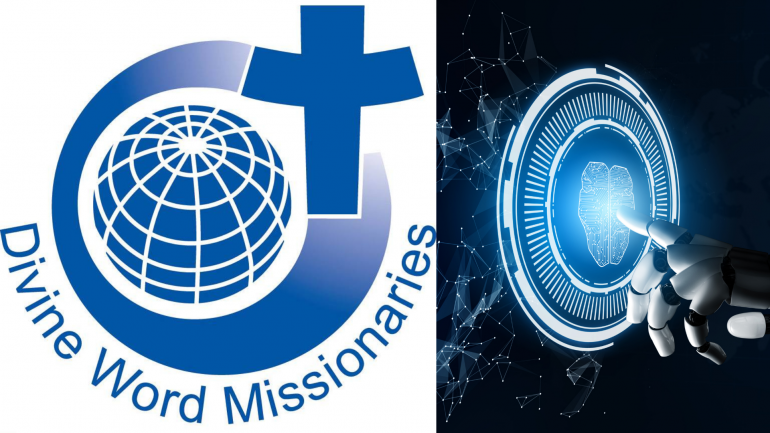SVD Missionaries Seek to Harness AI Under the Light of Antiqua et Nova

Missionaries must navigate between extremes—neither embracing AI uncritically nor rejecting it reflexively, but engaging it with wisdom
When Pope Francis declared artificial intelligence an “epochal change” requiring theological reflection, he wasn’t speaking to tech executives or engineers. He was addressing people of faith wrestling with how divine purpose intersects with digital possibility. For the Divine Word Missionaries, a religious order founded to cross every frontier in service of the Gospel, this moment feels both familiar and revolutionary.
The Society of the Divine Word has always embraced tools that amplify God’s message. When St. Arnold Janssen founded the congregation in 1875, he seized upon the printing press as a revolutionary way to spread the Gospel across languages and cultures. Today, as artificial intelligence reshapes human communication, his spiritual descendants face a strikingly similar opportunity. The question is not whether AI belongs in mission work; it is how to harness its power while preserving the deeply personal nature of Christian ministry.
The Vatican’s recent document Antiqua et Nova provides a theological roadmap that begins with a fundamental truth: human intelligence reflects the divine image. This gift, the document reminds us, should be expressed through “responsible use of reason and technical abilities in the stewardship of the created world.” For missionaries who have long used radio waves, satellite communications, and digital networks to reach remote communities, this affirmation feels both validating and urgent.
Yet the document draws a crucial distinction that speaks directly to every missionary’s heart. While AI can translate languages, analyse patterns, and generate sophisticated content, it remains bound by logical-mathematical frameworks. Human intelligence emerges through something far richer, embodied experience, cultural immersion, and openness to transcendence. AI systems can “learn” through machine learning, but this differs fundamentally from human intelligence shaped by sensory input, emotional responses, and social interactions.
This distinction matters profoundly for missionaries whose calling depends on personal encounter. Proclaiming the Gospel requires what no algorithm can provide: sitting with someone in their suffering, sharing their joy, building trust that transcends cultural barriers. AI might assist communication, but it cannot replace the fundamental human presence that authentic mission demands.
Still, when approached with theological depth and ethical wisdom, AI offers genuine possibilities for enhancing missionary work. Consider SVD missionaries in Ghana’s Upper East Region, serving communities with limited literacy and few trained catechists. AI-powered language tools could translate homilies and catechetical materials into local dialects like Gurune and Kasem, making the Gospel accessible to those who rarely hear it in their mother tongue. The key lies in ensuring technology supports rather than supplants the deeper work of cultural learning and relationship building.
The potential becomes concrete in the Philippines, where SVD schools explore adaptive learning platforms. In rural areas lacking qualified teachers, AI tutors could offer personalised instruction, helping students progress individually while freeing human educators to focus on character and spiritual formation. This aligns with Antiqua et Nova’s recognition that AI can “enhance access to education, offering tailored support… especially where educational resources are scarce.”
Perhaps most compelling is AI’s potential to serve justice. In parts of India where SVD missionaries advocate for tribal rights, AI-based data analytics could track patterns of environmental degradation and land appropriation. By visualising illegal deforestation or mining activities, missionaries could better support indigenous communities defending their ancestral territories. This reflects the document’s emphasis on using AI to “promote integral human development and foster just social dynamics.”
These examples illuminate both AI’s promise and its peril in missionary contexts. The promise lies in technology’s capacity to amplify human efforts, making Gospel proclamation more accessible and justice advocacy more effective. The peril lurks in the temptation to substitute efficiency for encounter, to prioritise technological solutions over the patient work of accompaniment that defines authentic mission.
Antiqua et Nova offers four ethical principles to guide this discernment. Human dignity must remain paramount, AI must always respect the inherent worth of every person created in God’s image. The common good should drive technological development, ensuring AI benefits all people, especially the poor and marginalised. Relationality must be preserved; AI must not diminish the authentic interpersonal relationships at the heart of faith and mission. Finally, stewardship calls us to use AI in ways that reflect ecological care and social responsibility.
These principles align remarkably with the SVD’s traditional fourfold dialogue with cultures, religions, the poor, and creation. They suggest that AI, when properly integrated, can enhance rather than compromise the missionary vocation. The challenge lies in maintaining what the document calls “wisdom of heart”, discerning AI’s ethical implications while remaining humble about its limitations.
This discernment becomes crucial when considering AI’s risks. Over-reliance could erode the incarnational dimension that makes Christian mission distinctive. The digital divide might exclude those already marginalised from AI’s benefits. Energy-intensive AI systems could undermine the very creation missionaries are called to protect. Most subtly, AI’s seductive efficiency might tempt missionaries to prioritise technological solutions over the patient work of accompaniment that defines Gospel service.
These concerns demand a prophetic approach to AI, embracing its genuine benefits while remaining vigilant about its spiritual and social dangers. For SVD missionaries, this means asking fundamental questions: Does this AI initiative align with Gospel values? Does it empower the communities we serve or reinforce dependency? Does it enhance human dignity or diminish it?
Developing such discernment requires a missionary spirituality that is both technologically engaged and deeply rooted in contemplative practice. It demands wisdom to see AI as a tool rather than a panacea, humility to recognise its limits while appreciating its gifts, and hope to envision technology serving communion, justice, and creation care.
Antiqua et Nova warns against allowing AI to “obscure the horizon of transcendence and the heart’s longing for God.” For missionaries, this means ensuring that technological advancement serves rather than substitutes for the fundamental human encounter with the divine. It means using AI to facilitate rather than replace the slow work of cultural learning, relationship building, and spiritual accompaniment that defines authentic mission.
The document’s conclusion offers a sobering reminder that we face a choice. As Pope Francis notes, “We are free to apply our intelligence towards things evolving positively, or toward decadence and mutual destruction.” For Divine Word Missionaries, this choice carries particular weight. Called to cross frontiers in service of the Gospel, they stand at the intersection of technological possibility and spiritual responsibility.
The path forward requires neither uncritical embrace nor reflexive rejection of AI, but rather the thoughtful engagement that has always characterised the best missionary work. It demands courage to experiment with new tools while remaining faithful to ancient truths, wisdom to distinguish between efficiency and effectiveness, and humility to recognise that no technology can substitute for the irreplaceable gift of human presence.
As SVD missionaries navigate this frontier, they carry a conviction that artificial intelligence, like any human creation, finds its proper place only when it serves human dignity, creation’s integrity, and the common good. In an age of rapid technological change, they are called to be prophetic users of AI, witnesses to truth, agents of justice, and builders of communion.
The future of AI in missionary work depends not on algorithmic sophistication but on the depth of spiritual discernment guiding its use. For those called to proclaim the Word across every frontier, this may be the most important mission field of all: ensuring that as humanity’s technological capabilities expand, our capacity for genuine encounter with God and neighbour expands as well. In this sacred work, artificial intelligence becomes not a replacement for human touch, but a tool that helps that touch reach further than ever before.
(Dr. John Singarayar, SVD, a priest of the Society of the Divine Word from the Mumbai Province in western India, holds a doctorate in Anthropology. He contributes regularly to journals and publications focusing on sociology, anthropology, tribal studies, spirituality, and mission.)








